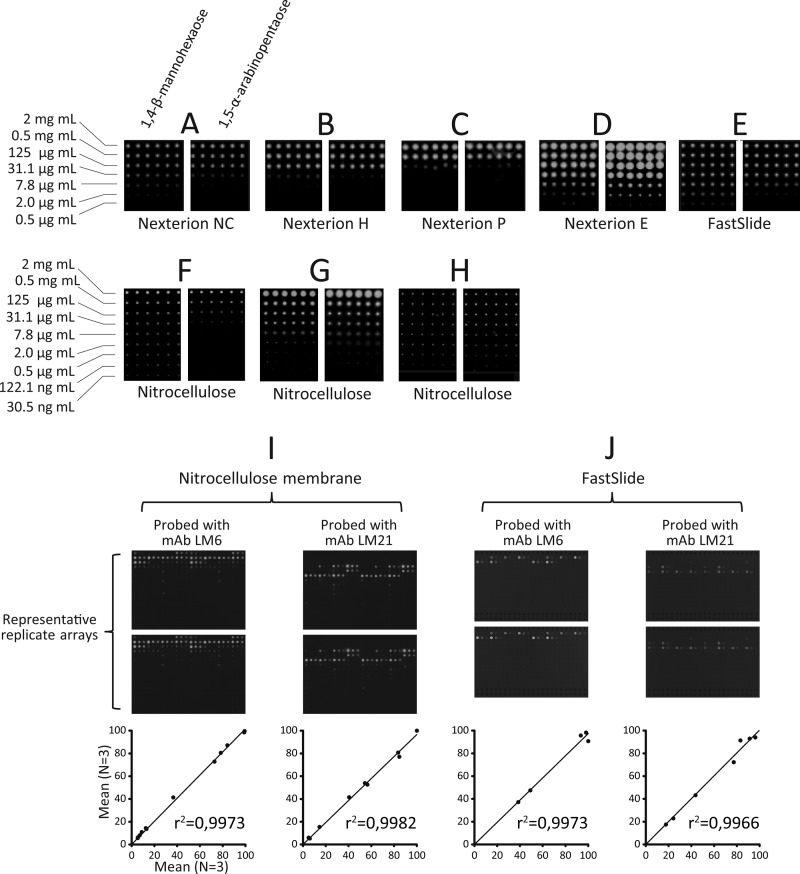FIGURE 2.
Microarray printing surfaces and reproducibility. Coupling oligosaccharides to protein enabled printing on a wide variety of slides and membranes commonly used for microarray production. (1→4)-β-d-Mannohexaose and (1→5)-α-l-arabinopentaose microarrays were printed in sextuplet and at 10 concentrations from 2 mg/ml to 30.5 ng/ml. The arrays were probed with the anti-mannan or anti-arabinan monoclonal antibodies LM21 and LM6, respectively. Microarrays were printed using a noncontact piezoelectric robot (A–F) or a pin-based robot (G and H). Arrays were printed on surface-modified glass slides (A–C), nitrocellulose-coated glass slides (D and E), and nitrocellulose membrane (F–H). Reproducibility of the microarrays was tested by printing 12 copies of arrays on both nitrocellulose membrane (I) and nitrocellulose-coated glass FAST Slides (J). Arrays were probed with the anti-mannan mAbs LM21 or the anti-arabinan mAb LM6. Representative probed replicate arrays are shown, as well as graphs of mean spot signals from three arrays plotted against each other. Axes on the graphs are relative mean spot signals.

